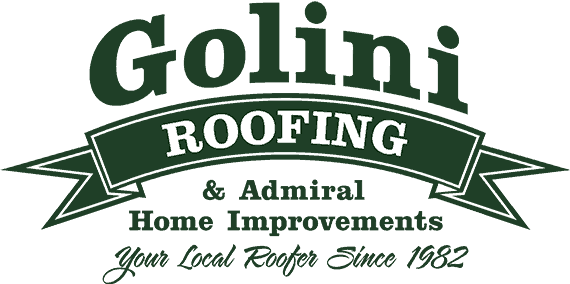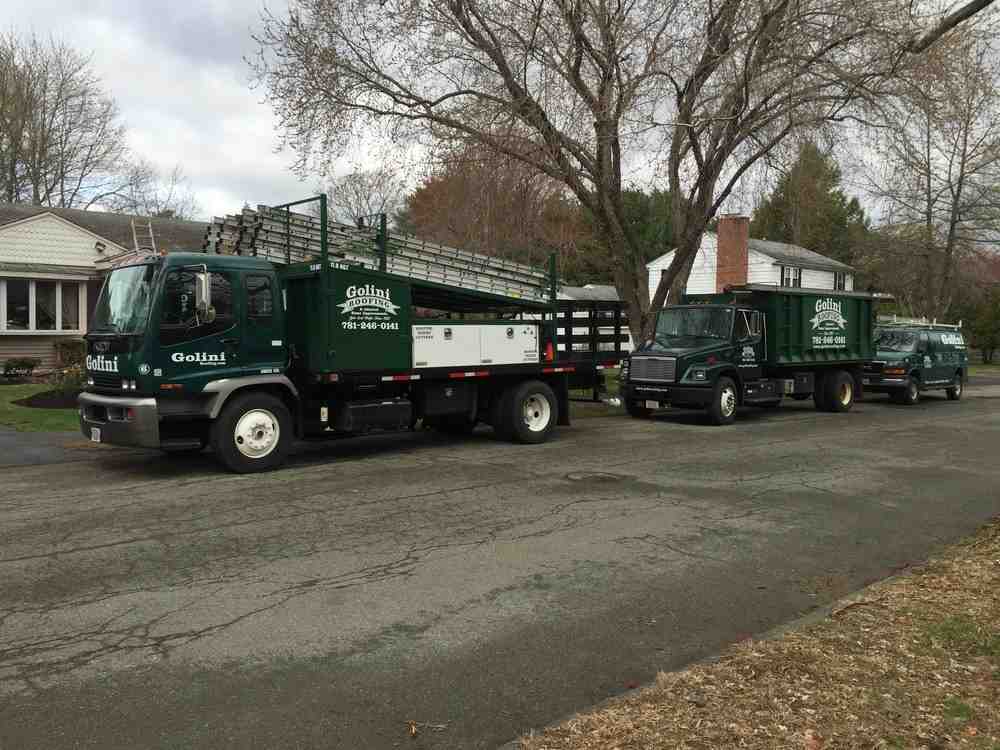Roof: The Ultimate Guide to 9 Types & Materials in 2024
Understanding Roofs: Types, Materials, and Maintenance
A roof is the uppermost covering of your home, offering protection from rain, snow, wind, and sunlight. Here’s a quick rundown to understand different aspects of a roof:
- Types: Flat, sloped, gable, hip, dome, vault
- Materials: Asphalt shingles, metal, wood, clay tiles, slate, synthetic
- Maintenance: Regular inspections, common repairs, replacement
Every home requires a durable and reliable roof to shield against harsh weather conditions and improve curb appeal. The material, design, and maintenance strategy for a roof can significantly influence its longevity and performance.
I’m Jack Golini, owner of Golini Roofing with over 35 years of experience in top-quality roofing solutions. Our team specializes in durable installation and meticulous cleanup, ensuring your home remains protected and visually appealing.

Roof glossary:
– residential roofing company
– residential roof repair company
Types of Roofs
Roofs come in various shapes and designs, each with specific benefits and uses. Let’s explore the main types:
Flat Roofs
Flat roofs are horizontal or nearly horizontal surfaces. Historically, they’ve been popular in the Middle East and the American Southwest due to their simplicity and suitability for arid climates.
Key features:
– Simplicity: Easy to construct and maintain.
– Cost-effective: Generally cheaper due to fewer materials.
– Versatility: Often used for commercial buildings, warehouses, and modern residential structures.
Modern flat roofs benefit from advanced waterproof materials like EPDM rubber and PVC membranes, which improve durability and weather resistance.
Sloping Roofs
Sloping roofs, or pitched roofs, are designed to shed water and snow efficiently. There are several types:
- Lean-to or Shed Roof: A single slope. Simple and cost-effective.
- Gable Roof: Two slopes that form an “A” shape. Common in residential architecture, especially in northern Europe and the Americas.
- Hip Roof: Slopes on all four sides, often seen in American houses and southern European architecture.
- Gambrel Roof: A type of gable roof with two slopes on each side, providing more attic space.
- Mansard Roof: A hipped gambrel roof with two slopes on every side, widely used in French architecture during the Renaissance and Baroque periods.
Specialty Roofs
Specialty roofs include unique designs for specific aesthetic or architectural needs:
- Vault Roof: Arched roofs that provide a large, open space below. Common in historical and religious buildings.
- Dome Roof: Rounded roofs, often seen in monumental architecture like the Taj Mahal.
- Geodesic Dome: A modern, spherical design made of interconnected triangles, known for its strength and efficiency.
- Cantilevered Roof: Extends beyond its support, creating an overhang without additional supports below.
- Thin-Shell Roof: Made from thin, curved slabs of concrete, offering a sleek, modern appearance.

Each roof type has its own set of advantages and is suitable for different climates, architectural styles, and personal preferences. Understanding these can help you make an informed decision for your home or building.
Roofing Materials
Choosing the right roofing material is crucial for the longevity, efficiency, and aesthetic appeal of your roof. Let’s explore the most common materials:
Asphalt Shingles
Asphalt shingles are the most popular roofing material for residential homes in the U.S. They are known for being cost-effective and easy to install. Available in various colors, they can complement any home style.
Key features:
– Cost-effective: One of the most affordable roofing options.
– Versatile: Comes in a variety of colors and styles.
– Lifespan: Typically lasts 15-30 years, depending on the quality and maintenance.
Metal Roofing
Metal roofing is highly durable and requires minimal maintenance. It includes materials like steel, aluminum, copper, and zinc.
Key features:
– Durability: Can last up to 70 years or more.
– Low maintenance: Resistant to fire, wind, and water.
– Energy-efficient: Reflects heat, reducing cooling costs in hot climates.
Wood Roofing
Wood shingles and shakes offer a natural and rustic look. They provide excellent insulation properties but require more maintenance.
Key features:
– Aesthetic appeal: Natural, rustic look.
– Insulation: Good insulating properties.
– Maintenance: Requires regular maintenance to prevent rot and insect damage.
Clay and Slate Tiles
Clay tiles and slate roofing are known for their durability and aesthetic appeal. They are often seen in Mediterranean and historic buildings.
Key features:
– Durability: Can last up to 100 years or more.
– Aesthetic: High-end look that can increase property value.
– High cost: Expensive to install and repair.
Synthetic and Modern Materials
Modern roofing materials include EPDM rubber, TPO, PVC, polyurethane foam, and fiberglass. These materials offer various benefits, including durability, flexibility, and energy efficiency.
Key features:
– EPDM Rubber: Durable and weather-resistant, ideal for flat roofs.
– TPO (Thermoplastic Olefin): Energy-efficient and resistant to UV rays.
– PVC (Polyvinyl Chloride): Durable and resistant to chemicals and fire.
– Polyurethane Foam: Excellent insulation and sealing properties.
– Fiberglass: Lightweight and resistant to extreme temperatures.
Understanding these roofing materials can help you make an informed decision based on your budget, aesthetic preferences, and functional needs. Each material has its own set of advantages, so consider consulting with a professional to choose the best option for your home.
Next, we’ll explore the importance of roof maintenance and how to keep your roof in top condition.
Roof Maintenance
Maintaining your roof is essential to ensure it lasts as long as possible and protects your home effectively. Let’s break down the key aspects of roof maintenance:
Regular Inspections
Regular inspections are crucial for spotting early signs of damage and wear. You should inspect your roof at least twice a year—once in the spring and once in the fall.
Key things to look for:
– Wear and tear: Check for any signs of aging or sagging.
– Cracked shingles: These are a common issue that can lead to leaks.
– Loose flashing: Flashing around vents and chimneys often comes loose and needs fixing.
– Shingle residue: Excessive granules in gutters indicate that shingles are deteriorating.
Pro Tip: Use binoculars to inspect from the ground, or consider hiring a professional for a thorough check. This avoids the risks associated with climbing on the roof.
Common Repairs
Even with regular inspections, some repairs will be necessary over time. Addressing minor issues promptly can prevent more significant problems down the line.
Common repairs include:
– Cracked shingles: Replace individual shingles to prevent leaks.
– Loose flashing: Secure or replace flashing around vents and chimneys.
– Rubber fittings: Check and repair rubber fittings around pipes and vents.
– Shingle residue: Clean gutters and replace worn shingles.
Ignoring these small repairs can lead to bigger, more expensive issues. For instance, a small leak can eventually cause significant water damage inside your home.
Roof Replacement
Sometimes, repairs aren’t enough, and a full roof replacement is necessary. This is especially true if your roof is nearing the end of its lifespan or has significant damage.
Factors to consider:
– Cost: The cost of roof replacement varies widely depending on the materials used. Asphalt shingles are generally the most affordable, while slate and metal roofs can be more expensive.
– Materials: Choose materials based on your climate, budget, and aesthetic preferences. For example, metal roofs are great for hot climates due to their heat-reflecting properties.
– Design: The design of your roof can also impact the cost and complexity of the replacement. Complex designs with multiple slopes or angles will be more expensive.
Average project cost: The average cost of a roof replacement can range from $5,000 to $10,000 for asphalt shingles. Metal and slate roofs can cost significantly more but offer longer lifespans and better durability.
By staying on top of regular inspections, making timely repairs, and knowing when it’s time for a replacement, you can ensure your roof remains in excellent condition for years to come.
Next, we’ll address some frequently asked questions about roofs to help you make informed decisions.
Frequently Asked Questions about Roofs
What is the full meaning of roof?
A roof is the top covering of a building, providing protection against rain, snow, sunlight, and wind. It includes all the materials and constructions necessary to support it on the walls or uprights. Essentially, it’s an integral part of the building envelope, ensuring your home or commercial building stays dry and safe.
Is it roofs or rooves?
The plural of roof can be either roofs or rooves, though roofs is far more commonly used in modern English. The term rooves is considered an irregular plural and is less frequently seen.
What are the three types of roofs?
There are many types of roofs, but the three most common types are:
- Hip Roof: A hip roof has slopes on all four sides, making it very stable and durable. This design is popular in areas prone to high winds and heavy snow.
- Gable Roof: A gable roof has two sloping sides that meet at a ridge, forming a triangle. This classic style is easy to build and allows for good ventilation.
- Flat Roof: Flat roofs are horizontal or nearly horizontal. They are common in commercial buildings and in regions with little rainfall. Special waterproof materials are used to prevent leaks.
Find out more about these and other roof types here.
By understanding these basics, you can better appreciate the importance of your roof and how to maintain it. Up next, we’ll dive into more detailed aspects of roof maintenance and care.
Conclusion
At Golini Roofing, we pride ourselves on delivering top-notch roofing services to the Wakefield, MA community. With over 35 years of experience, our commitment to quality craftsmanship and customer satisfaction sets us apart.
Residential and Commercial Roofing
Whether you need a new roof for your home or a commercial property, we have the expertise to handle any project. Our services range from roof replacements and repairs to skylight installations and gutter services. We use only the best materials to ensure your roof withstands the test of time.
Hand-Nailing Shingles
One of the unique aspects of our service is our hand-nailing technique. Unlike many roofing companies that use nail guns, we hand-nail each shingle. This method ensures precision and durability, providing superior weather resistance and longevity for your roof.
Craftsmanship and Customer Satisfaction
Our commitment to craftsmanship is evident in every roof we install. We understand that a new roof is a significant investment, and we strive to make the process as smooth and stress-free as possible. From the initial consultation to the final inspection, we keep you informed and involved every step of the way.
Our team ensures minimal disruption to your daily life and leaves no trace behind, thanks to meticulous cleanup. We aim to exceed your expectations and leave you completely satisfied with our work.
Get in Touch
Ready to experience the Golini Roofing difference? Contact us today for a complimentary, no-obligation roofing estimate. Visit our Residential Roofing Services page to learn more about how we can help you protect your home with a roof you can trust.
Feel free to request an estimate online. We look forward to assisting you with your roofing needs in Wakefield, MA, and surrounding areas.

Your home deserves the best, and at Golini Roofing, we deliver nothing less.

